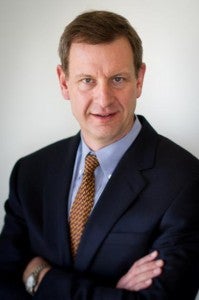 The recent headlines for solar power have been encouraging. According to the Solar Energy Industries Association (SEIA), the cost to install solar is declining as panel prices fell by 41% in the fourth quarter of 2012 versus the previous year. This helped US solar installations to grow by around 75% in 2012, from 1,855 megawatts (MW) in 2011 to 3,300 MW. (For comparison, the average coal plant in the US has a capacity of about 650 MW). Even better, they forecast that installations will continue to climb to an estimated 9,000 MW in 2016.
The recent headlines for solar power have been encouraging. According to the Solar Energy Industries Association (SEIA), the cost to install solar is declining as panel prices fell by 41% in the fourth quarter of 2012 versus the previous year. This helped US solar installations to grow by around 75% in 2012, from 1,855 megawatts (MW) in 2011 to 3,300 MW. (For comparison, the average coal plant in the US has a capacity of about 650 MW). Even better, they forecast that installations will continue to climb to an estimated 9,000 MW in 2016.
Unfortunately, lack of investment capital may be a barrier to realizing this vision. If we do not have enough funding, these projects will never be built. Bloomberg New Energy Finance forecasts that the industry will need $3.1 billion of equity investment in 2013, compared to $1.8 billion in 2012. Environmental Defense Fund (EDF) is committed to helping expand the roster of investors in solar projects, as investing in these projects is often not only highly profitable but also a major contribution to the sustainability of our planet.
Large investors have developed two strategies to invest in solar projects. The traditional method is to make investments in large, utility scale projects. More recently, residential solar developers have created funds for investors to take stakes in a large number of residential and small commercial projects. The latter strategy has made ‘no-money down’ solar available for homeowners who do not have the upfront capital to purchase solar systems, which can cost up to $15,000 or more.
Unfortunately, these investment strategies can be quite complex and are generally attractive only for corporations and certain wealthy individuals. To understand why, we need to explore the tax incentives for solar investors. The federal government provides tax breaks for solar investors to accelerate deals, develop a robust market that is expected to lower costs over time and allow investors to capture part of the societal benefit of avoiding development of more fossil fuel power plants. EDF believes that this is a very good idea. Read More »
 As the dog days of summer expire and football season approaches, many sports fans will anxiously scan their favorite team’s rosters for training camp injuries–finding everything from the innocuous, to the dreaded torn Achilles that already sidelined several pro players for the season’s start.
As the dog days of summer expire and football season approaches, many sports fans will anxiously scan their favorite team’s rosters for training camp injuries–finding everything from the innocuous, to the dreaded torn Achilles that already sidelined several pro players for the season’s start.









